“What are Chubu’s famous sightseeing spots and food specialties?” some people may be wondering. The Chubu Region is located almost in the centre of Japan and is called the "Roof of Japan" because of its 3 mountain ranges. Depending on location, the Pacific Ocean side, Sea of Japan side, or the mountainous area, climates and cultures are different with each area having its own unique cuisine and developed industries.
Table of Contents
The Chubu Region has 9 Prefectures
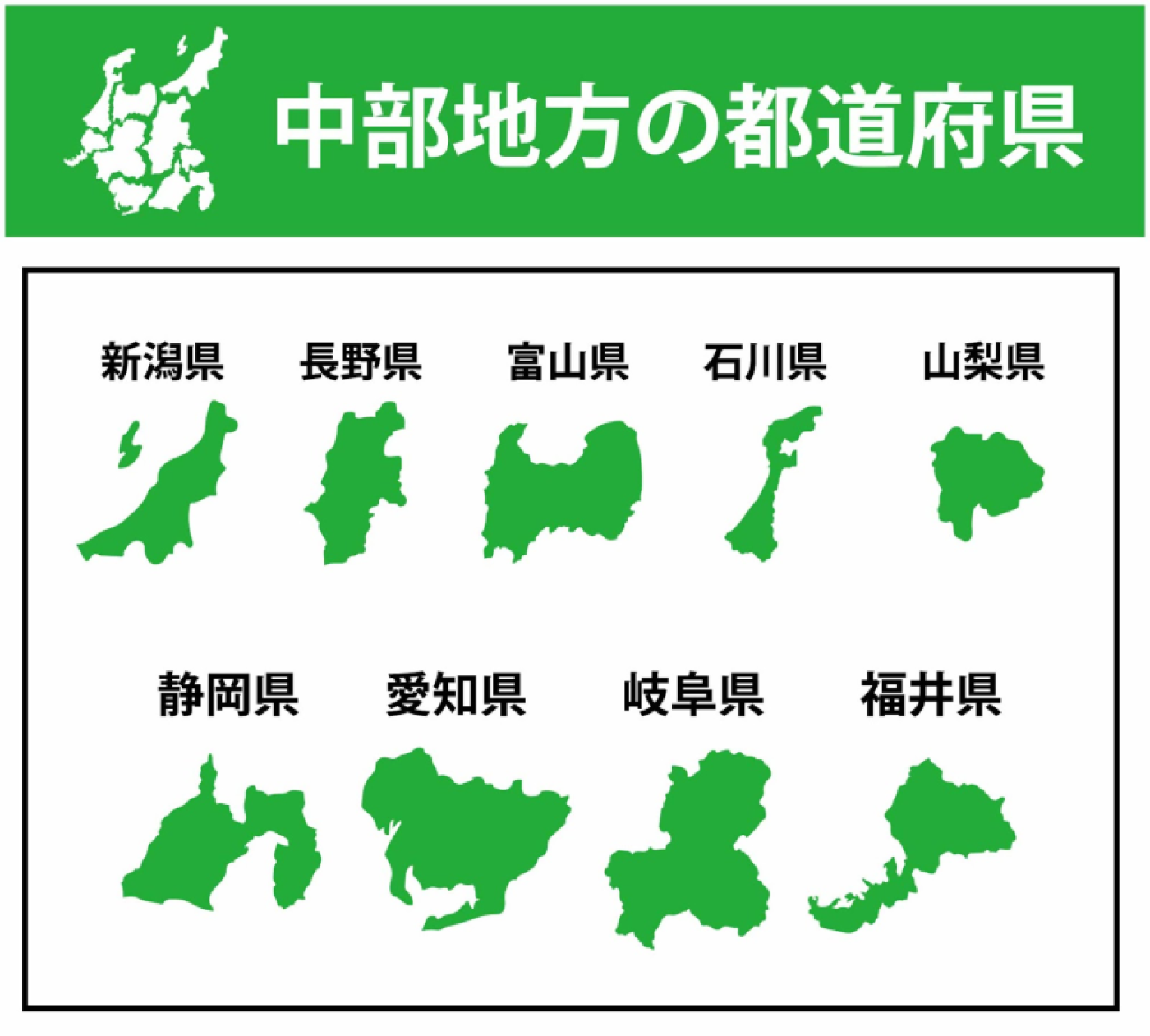
The Chubu Region is located in the center of Japan and is made up of 9 prefectures. It is known as the "Roof of Japan (日本の屋根)" because of its 3 mountain ranges consisting of the Hida, Kiso, and Akaishi Mountains which are collectively known as the "Japanese Alps". These mountain ranges divide the region into 3 following areas:
-
Tokai Region (東海地方): Located on the Pacific Ocean side. Has a mild climate, and does not get much snow.
-
Hokuriku Region (北陸地方): Located on the Sea of Japan side. Heavy snow in winter due to seasonal winds coming from the Sea of Japan.
-
Central Highland (中央高地): Mountains and basins. Sharp weather changes can be felt In the basins, there are many days in summer with high temperatures, and low temperatures in winter. But in high altitude areas, the temperature is low and comfortable even during summer.
Each of the 3 regions have different climates and places to visit so be sure to look up the features of where you’re going to be prepared.
1. Aichi Prefecture 愛知県
Aichi Prefecture is located on the Pacific Ocean side. Summers are hot and have high precipitation, while winters have many sunny days with cold winds blowing from the northwest. Nagoya City, the prefectural capital, is the largest city in the Chubu Region. There are many places to visit there including Nagoya Castle and the Higashiyama Zoo & Botanical Gardens.
Aichi Prefecture is famous for its prosperous manufacturing of automobiles, video cameras, sewing machines, and etc.. Traditional crafts are also made there, for example pottery like Seto-yaki (瀬戸焼き) and Tokoname-yaki (常滑焼き) which are known worldwide. For those interested in manufacturing and traditional crafts, it would be a great idea to include tours of factories and workshops in your trip to Aichi.
2. Shizuoka Prefecture 静岡県
Shizuoka Prefecture is located on the Pacific Ocean side. It is a long piece of land stretching from east to west. The mountains in the north get a lot of snowfall in winter, and are cool even in summer. On the other hand, the Pacific Ocean side has a mild climate and does not snow much even in winter. Shizuoka Prefecture and Yamanashi Prefecture are straddled by Mount Fuji, the tallest mountain in Japan.
3. Gifu Prefecture 岐阜県
Gifu Prefecture is a landlocked prefecture above Aichi Prefecture, and stretches from north to south. The northern part has a cold climate, experiencing heavy snowfall with below zero temperatures in winter. Mornings and nights from spring to autumn are cold as well. On the other hand, in the south basin, the temperature exceeds 40°C/104°F in summer with some towns recording the highest temperatures in Japan.
In Gifu Prefecture, there is an area called "Hida Takayama (飛騨高山)" where wooden townscapes from the Edo period still remain. You can walk around, but we also recommend riding a rickshaw around the town. Gifu Prefecture also has hot springs, Gero Onsen (下呂温泉) in particular is famous in Japan, and is said to be one of “Japan's Top 3 Hot Springs (日本三名泉)”. Enjoy visiting the historic townscape and hot springs in Gifu.
4. Yamanashi Prefecture 山梨県
Yamanashi Prefecture is an inland prefecture located above Shizuoka Prefecture. Other than Mount Fuji that borders Shizuoka Prefecture too, there are also other tall mountains to enjoy climbing and playing in the river. Yamanashi's climate is characterized by long sunny days, little rainfall, and large temperature differences throughout the year. This climate is suitable for fruit production, and Yamanashi has the highest yield of peaches and plums in Japan. In addition, the amount of grapes harvested is No. 1 in Japan, and there are many types of wine made by processing those grapes. If you are interested in Japanese wine, we recommend you to visit a winery where you can experience wine tasting.
5. Nagano Prefecture 長野県
Surrounded by the Japanese Alps, Nagano experiences large temperature differences between morning and evening, and between summer and winter. Karuizawa in the east of Nagano Prefecture is popular as a summer resort because the highlands are cool even in summer.
The prefecture’s well-preserved historic buildings and townscapes are worth visiting. Zenkoji’s main hall is designated as a national treasure, many people from all over Japan travel to visit it. In addition, the road called Kisoji, which was built in the Edo period to connect Kyoto and Tokyo, is also famous. Along Kisoji, at the base of the road is Tsumago-juku where the townscape from the Edo period still remains. Not only can you enjoy the view, but you can stay in a historic building, so it is recommended for those who are interested in old traditional Japanese architecture.
6. Toyama Prefecture 富山県
Toyama Prefecture faces the Sea of Japan. There is snowfall In winter due to seasonal winds, but because the warm currents flow in too the cold isn’t as bad. The fishing industry thrives in Toyama Bay. Yellowtail, firefly squid, white shrimp, etc. can be caught, and there are many local dishes made using fresh seafood. Among them, “buri daikon (ぶり大根)” a dish made by braising yellowtail and radish in soy sauce and sugar is a famous dish that has spread all over the country.
Kurobe Dam, which is the tallest in Japan, is located in Toyama Prefecture. You can see the spectacular sight of 10 tons per second of water gushing out during the dam release, a tourist event that takes place between June to October.
7. Ishikawa Prefecture 石川県
Ishikawa Prefecture has a peninsula that extends from south to north, and finally protrudes into the Sea of Japan. Kanazawa City, the prefectural capital, was not affected by large natural disasters or war damage, so samurai residences, old shrines, and old temples still remain. There are also many traditional crafts that have been handed down to the present day, such as Wajima-nuri lacquerware, Kaga Yuzen dyeing, and Kutani-yaki pottery.
For those who are interested in traditional Japanese crafts, try making something at a workshop. There are also many hot springs such as Wakura Onsen, Yamanaka Onsen, and Yamashiro Onsen. Therefore, Ishikawa Prefecture is also recommended for people who like hot springs.
8. Fukui Prefecture 福井県
Fukui Prefecture is located on the Sea of Japan side. The weather frequently changes in the coastal areas, there’s lots of rain in winter, and heavy snow in the northern areas near the mountains. When traveling to Fukui Prefecture, it is important to check the weather at your destination and prepare appropriate clothing and an umbrella.
Wakasa Bay in the south is a rias coastline with intricate coves and bays, and has a thriving aquaculture industry. In addition, natural Echizen crab and Wakasa puffer fish are also caught here, and are famous as special regional products. Another feature of Fukui Prefecture is that many dinosaur fossils in Japan have been found here. There is also a dinosaur museum that you should visit if you are interested.
9. Niigata Prefecture 新潟県
Niigata Prefecture is located in the northern part of the Chubu region facing the Sea of Japan. As with other prefectures facing the Sea of Japan, snow piles up high in winter due to seasonal winds. Niigata Prefecture is home to Shinano River, the longest river in Japan, and is a prefecture that is rich in water that is used to grow rice. There are many breweries that manufacture and sell sake made from rice, and some of them offer tours and tastings. For those who are a fan of sake, we recommend visiting sake breweries in Niigata Prefecture.
Writer's Pick
Famous Tourist Spots in Chubu Region
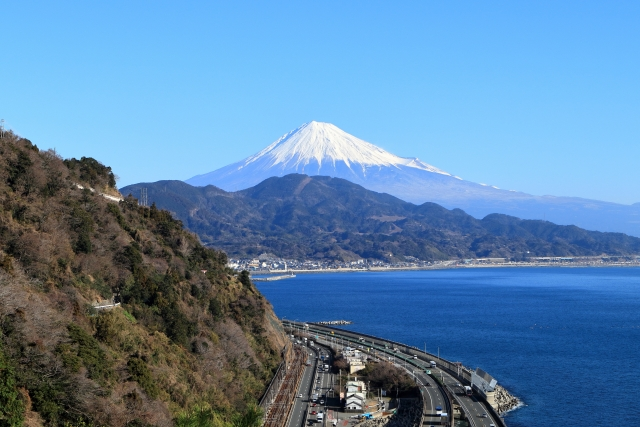
There are many sightseeing spots in the Chubu region to visit. Here, we will introduce Lake Kawaguchi, Gassho-zukuri Village, Kenrokuen, and Matsumoto Castle.
Kawaguchiko (Yamanashi Prefecture)
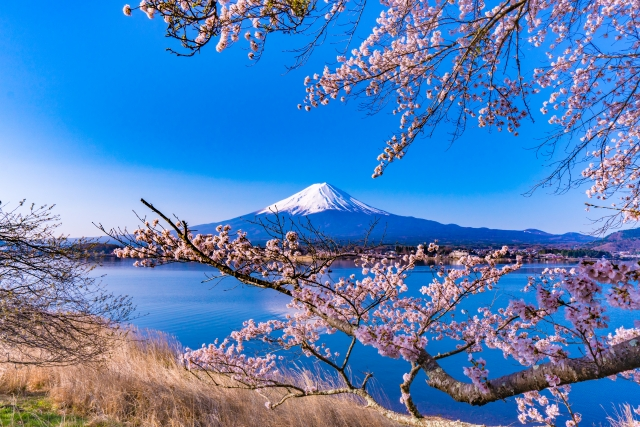
Lake Kawaguchi is a lake that spreads out at the bottom of Mount Fuji and is located in Yamanashi Prefecture. It is a spot where you can enjoy the different seasonal scenery with the majestic figure of Mount Fuji as a background. From the northern end of Lake Kawaguchiko, is a view of Mount Fuji reflected on the surface of the lake. Pleasure boats are also available, we recommended taking a ride and enjoying the surrounding scenery from the lake. In the same area, there is Oishi Park where you can enjoy seasonal flowers and hot springs as well.
Gassho-Zukuri Villages (Gifu and Toyama Prefectures)

Gassho-zukuri is a unique architectural style that exists only in Shirakawa-go in Gifu Prefecture, Gokayama in Toyama Prefecture, and their surrounding areas. It features a steep thatched roof and is designated as a UNESCO World Heritage Site. Many were made 100 to 200 years ago, and the oldest is said to have been made 400 years ago. The gassho-zukuri village has rice fields and forests, and is a place where you can enjoy the scenery of olden day Japan.
Kenrokuen Garden (Ishikawa Prefecture)
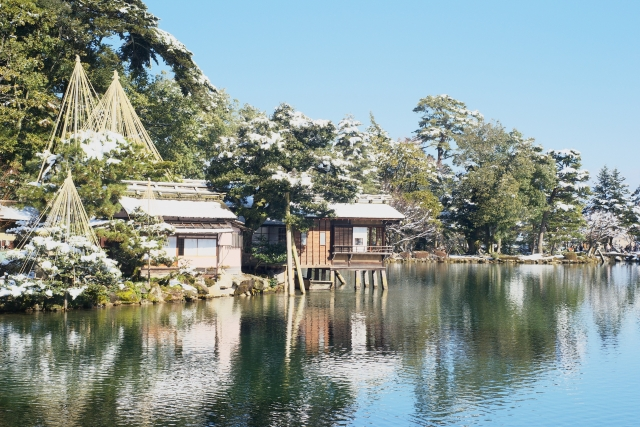
Kenrokuen is a garden in Kanazawa City, Ishikawa Prefecture, which was created by the feudal lord who ruled the land during the Edo period. It is one of "Japan's Three Greatest Gardens (日本三大名園)" and is a popular tourist spot. You can see cherry blossoms in spring, dark green trees in summer, and red leaves in autumn. Additionally, in winter, you can enjoy a scene where the trees are supported by poles and ropes to prevent them from breaking under the weight of the snow. In the vast garden, there are ponds of various sizes and Japanese-style tea rooms called "Chaya". You can enjoy matcha green tea at a teahouse while admiring the beautiful scenery.
Matsumoto Castle(Nagano Prefecture)
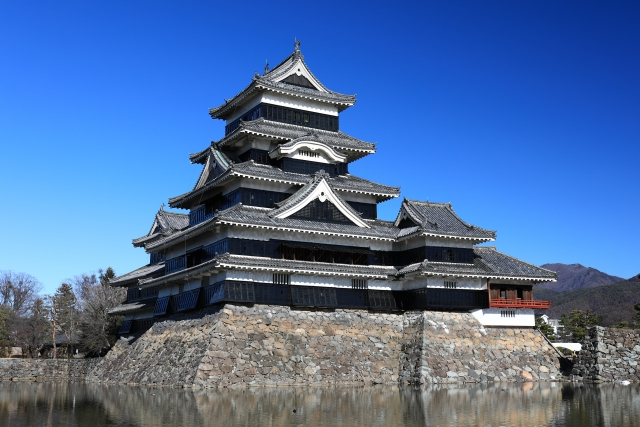
Matsumoto Castle is a castle building located in Matsumoto City, Nagano Prefecture, and is designated as a national treasure. It features a 5-storey castle tower whose floors and roofs gradually shrink the higher it goes. There are only 12 castles in Japan that still have castle towers, and Matsumoto Castle is said to be the oldest among 5-storey castle towers. The walls of the castle tower are painted white on the top and black on the bottom. This color scheme is not often seen in other castles.
Chubu Region's Soul Food and Local Specialties

In the Chubu region, there are dishes that have been loved through the generations and handed down to the present day. Here, we will introduce 9 of Chubu’s various dishes.
Miso-nikomi Udon (Aichi Prefecture)
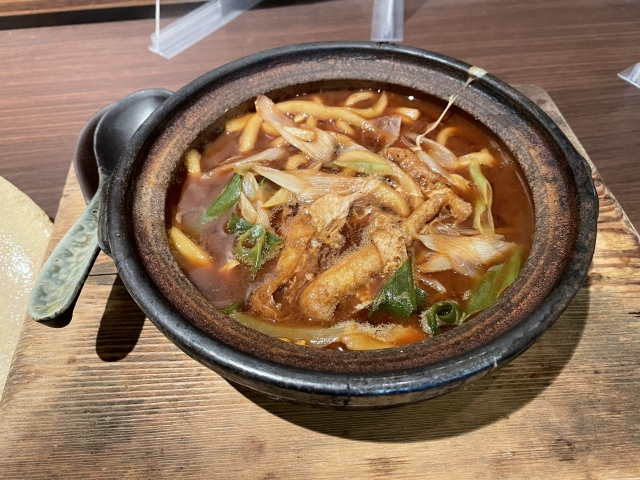
Miso-nikomi udon is a dish of udon noodles, chicken, kamaboko (steamed fish paste), green onions, fried tofu, and other ingredients simmered in a broth of Haccho miso from Aichi Prefecture. It is cooked in a thick clay pot called an earthenware pot and served as it is, so you can eat it while it is still hot. It is Aichi Prefecture's soul food, and characterized by the rich taste and aroma of Haccho miso.
Originally a home-cooked dish, it was said to have been first served in a restaurant in Ichinomiya City during the Meiji period. After that, it spread to Nagoya City, and became a popular dish throughout Aichi Prefecture.
Unajyu (Shizuoka Prefecture)
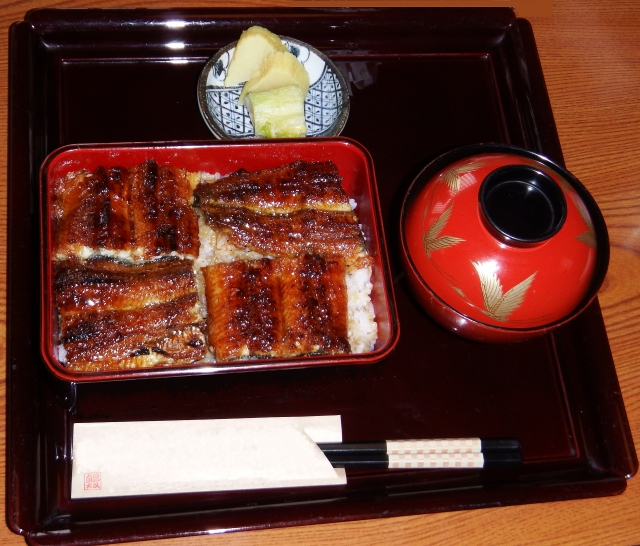
Unaju is a dish in which unagi (eel) is coated with a salty-sweet sauce made from soy sauce and sugar, grilled, and placed atop rice. Lake Hamana in Shizuoka Prefecture is said to be the birthplace of eel farming. The fragrant smell will stimulate your appetite, and the sweet eel covered in sauce goes well with rice.
Hoba Miso (Gifu Prefecture)
Hoba miso was originally a local dish of magnolia leaves grilled with green onions, ginger and miso paste. Nowadays, hoba miso that is made with Gifu local produce like Hida beef, fish, and vegetables is also enjoyed. The characteristics of Hoba miso are the fragrant smell of magnolia leaves together with condiments and seasonings that adds to the miso’s depth of flavours. The dish’s appearance is also quite unusual which adds to the experience, as you “eat” with your eyes.
Houtou (Yamanashi Prefecture)
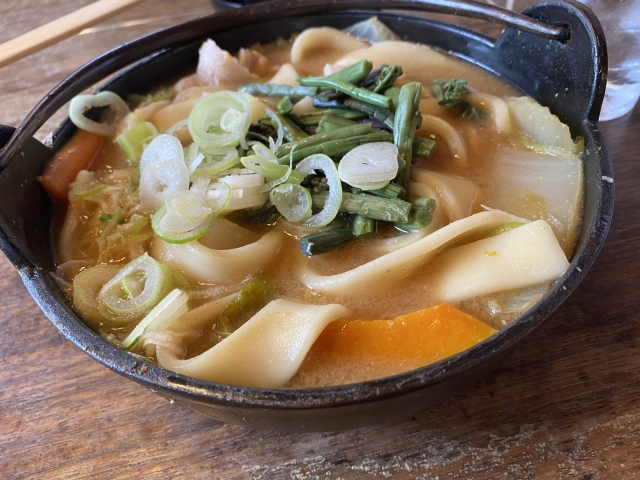
Houtou is a dish of flat noodles made from wheat flour and other ingredients boiled in miso soup. Vegetables such as pumpkin, potatoes, radishes, carrots, Chinese cabbage, and fried tofu are added as ingredients. It is a dish that is often made in winter because it warms up the body. Houtou is often made as a main dish in areas surrounded by mountains in Yamanashi Prefecture, which are not suitable for rice production. Since various vegetables are used as ingredients, it is highly nutritious, and can be said to be a dish created from the wisdom of Japanese predecessors.
Oyaki (Nagano Prefecture)
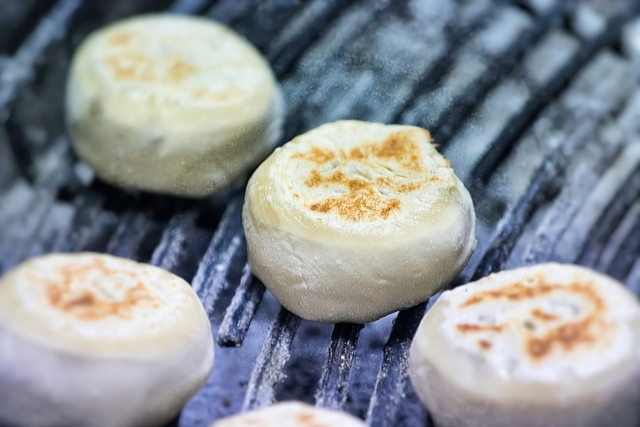
Oyaki is made by adding water to flour or buckwheat flour, filling the dough, and baking it. Ingredients typically include pickled nozawana greens (a specialty of Nagano), green onion miso, and pumpkin.
Originally, it was made in the mountains of Nagano Prefecture where wheat flour was largely produced, and was eaten as a staple food. It has a long history with traces of kneading the powder and baking it being found in ruins from the Jomon period.
Masu-Zushi (Toyama Prefecture)
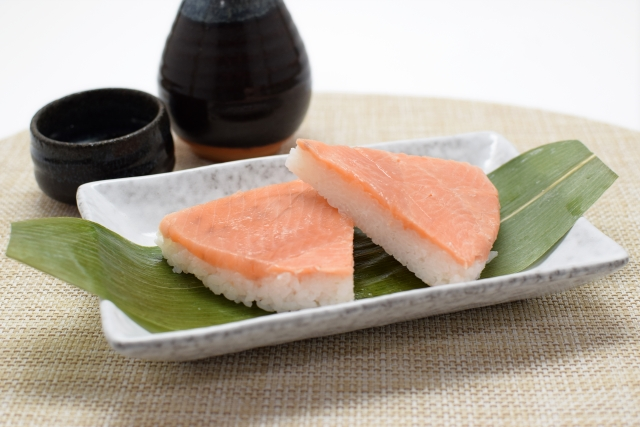
Masu-zushi is pressed sushi with bright pink freshwater trout and green bamboo grass. It is made by placing the bamboo grass in a round wooden container called “wappa” and spreading the vinegared rice and sliced trout on top. It differs from regular sushi in that the trout itself is also seasoned with vinegar to increase its shelf life. Cutting the sushi radially from the centre is also an unusual way to prepare the sushi.
Kabura-Zushi (Ishikawa Prefecture)
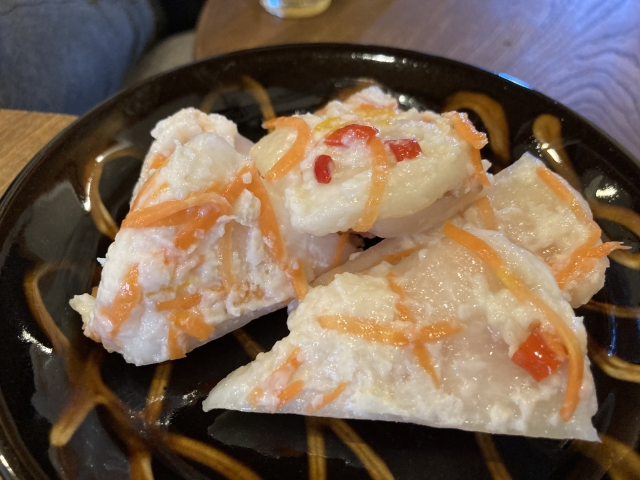
Kabura-zushi is made with salted turnip and carrots, sliced yellowtail, rice, and salt. Unlike regular sushi that uses vinegar, it is characterised by fermenting the yellowtail with rice. Usually when preparing sushi, fish is placed on top of rice. In the case of kabura-zushi, slices of yellowtail are sandwiched between cuts in the turnip, and rice is stuck all around it. The colour of the carrot acts as an accent, and makes it a beautiful dish to look at.
Echizen Soba (Fukui Prefecture)
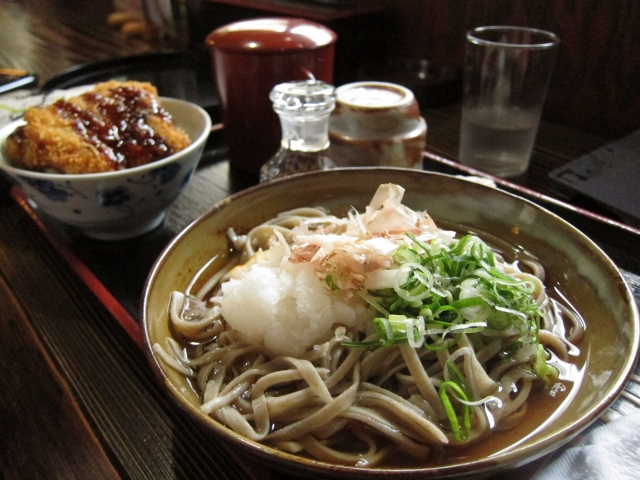
Echizen soba is a dish of buckwheat noodles topped with grated daikon. It is also called “oroshi soba” or “Echizen oroshi soba”. There is also a style in which the noodles and soup are served separately, but the grated daikon topping one is more common.
Noodles in Echizen soba have a stronger smell than regular soba noodles and are darker in colour too. Also, soba is usually eaten by slurping it up, but with Echizen soba you will bite the noodles because it has a chewier texture.
Noppei-Jiru (Niigata Prefecture)
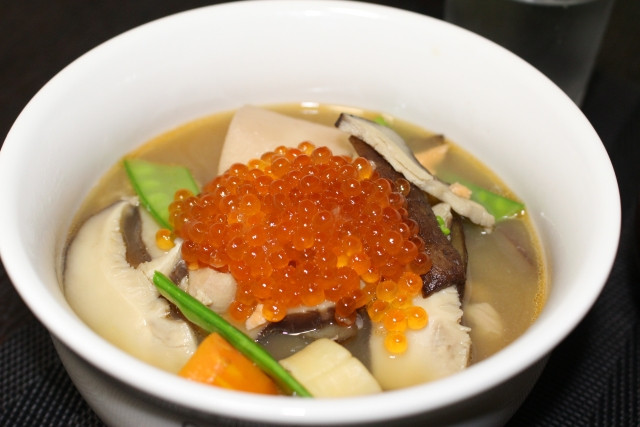
Noppei-Jiru is a dish of chicken, taro, carrots, and mushrooms simmered in dashi. It is also made in Shimane, Nara, and Kumamoto prefectures, but is generally known as a local dish of Niigata Prefecture. Noppei-Jiru in various regions is a dish with a lot of liquid, but Noppei-Jiru in Niigata Prefecture is a stewed dish with ingredients as the focus rather than the soup. A unique way of preparing it in Niigata Prefecture is the addition of salmon and salmon roe, both local specialties of Niigata Prefecture. It is also eaten chilled during summer..
Summary
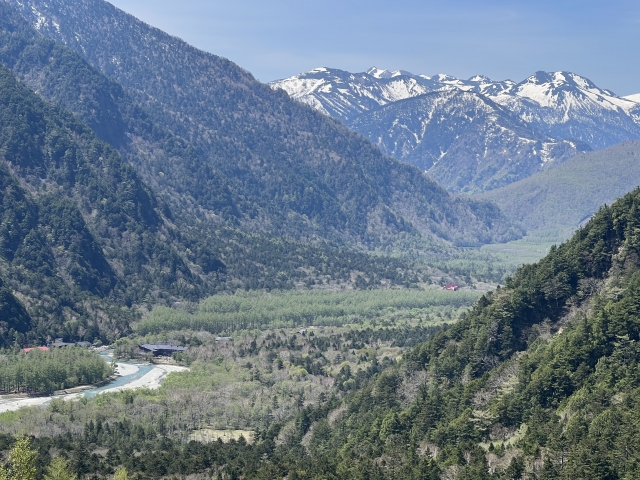
The Chubu region is made up of 9 prefectures, Aichi, Shizuoka, Gifu, Yamanashi, Nagano, Toyama, Ishikawa, Fukui, and Niigata. It is divided into 3 areas by a high mountain range called the Japanese Alps, and each area has a different climate and culture. Each prefecture has its own sightseeing spots of castles, townscapes from the Edo period, famous Japanese gardens, and more.
There is a wide variety of local cuisine and gourmet food that will make your trip more enjoyable. If you have a chance to visit Japan, be sure to visit the Chubu Region.







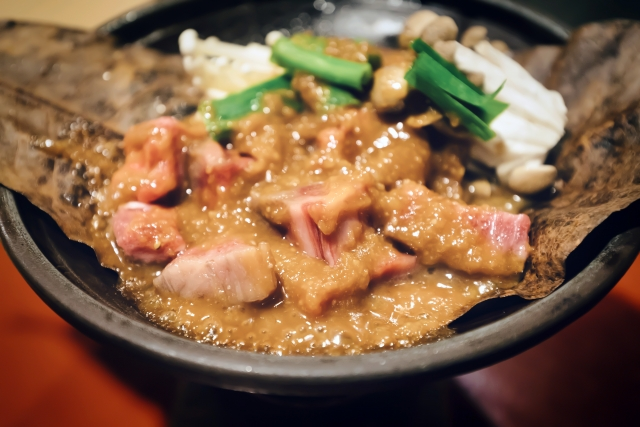
.jpg)


.png)










.jpg)











